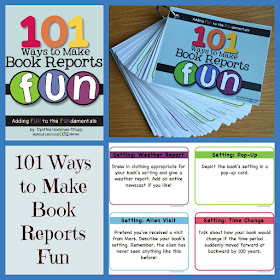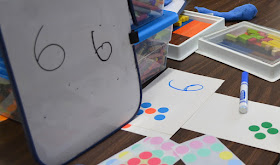
I am so excited to announce the completion of 101 Ways to Make Book Reports Fun!
Why make book reports fun?
Research consistently shows that children learn more when they are actively engaged in the learning process and having fun. These activities tap into children's interests: drama, art, music, reading, writing, and more!
Who are these activities designed for?
These activities are created for children in grades 2-8. Assignments could be modified to meet the needs of slightly older or younger students.
Many of the activities contain a particular focus: character, setting, sequencing, theme, drama, creative writing, music, persuasion, poetry, and more. While students should not be required to do a book report with every book they read, periodically requiring students to select assignments from different categories will help to deepen their literary experience.
 Can I use them with my current curriculum?
Can I use them with my current curriculum?
These activities are designed for use with any classroom or homeschool curriculum, with a single student or an entire classroom. Most choices may be done independently; some are best done with a partner or in a group. Activities speak to a wide variety of learning styles, including those that incorporate movement. They are also cross-curricular and include reading, writing, speaking, music, drama, and art. The activities also allow kids to share the joy of reading with other important people in their lives.
You will have THREE options on how to use this product.
Option 1:Create a book by stapling it or adding it to a three ring binder. Keep it near your lesson plans or your child's study area to use as a reference.
Option 2:
Print on cardstock and cut out the cards. Add them to a recipe box or a similar storage container. Your child can independently choose the activities he is interested in OR you can use the box yourself to file the activities you have completed with your students. Just add the cards you have completed to the back section.
Option 3:
Print this document (included in the pdf) on cardstock and cut out the cards. Punch a hole in the upper left corner of the cards, and add a key ring to create a flip-book. This will keep the activities organized while flipping through the cards to choose activities to complete.
Enjoy making book reports FUN!
This is the second release in the Making Learning Fun series. Information about the first book in the series, 101 Ways to Make Spelling Fun by Tamara Chilver, is available on her blog, Teaching with TLC. Additional titles in the series will be available soon.

This product is available from Teachers Pay Teachers and Teachers Notebook.
















